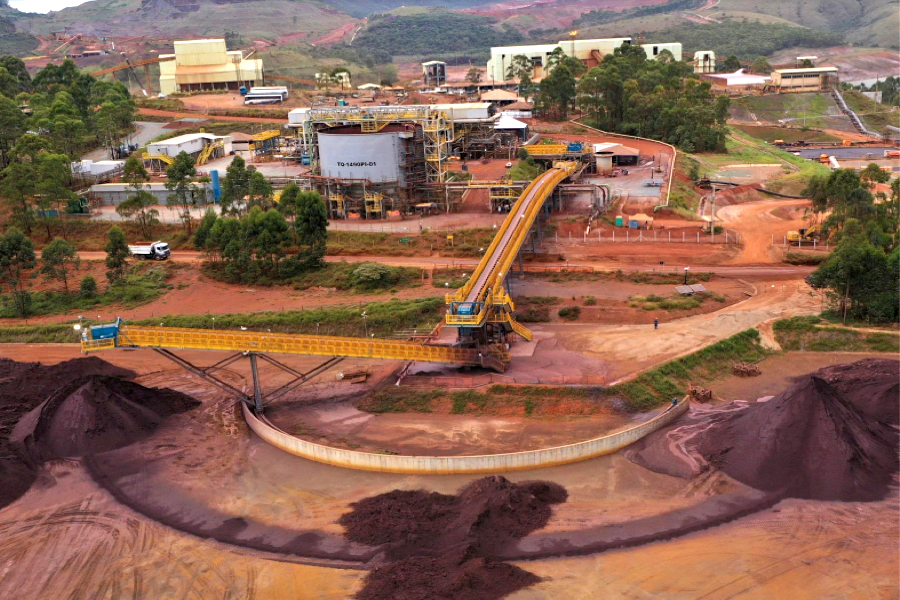Vale mulls base metals spinoff to tap EV market

Brazil’s Vale (NYSE: VALE), the world’s no.1 nickel producer, is evaluating a potential spinoff of its base metals division as part of the miner’s growing interest in the electric vehicles (EV) sector.
The company, which is said to be in talks with Tesla and other EV supply chain actors about securing nickel from its Canadian operations, is in the midst of expanding its Voisey’s Bay site in the province of Newfoundland and Labrador.
Vale’s plans include adding an underground mine to the Voisey’s Bay complex, which will produce about 40,000 tonnes of nickel-in-concentrate per year.
“Vale is in a position to be a significant supplier of premium metals to EV makers”
Chief Executive Officer Eduardo Bartolomeo
A recent report by market analyst Fitch Solutions indicates that demand for nickel, a key component of battery cathode chemistry in many existing and upcoming EVs, is expected to outpace both lithium and cobalt over the 2021-2030 period.
This is not the first time that Vale has looked into selling its base metals unit. In 2014, the company announced plans to sell a minority stake in the business, but it scrapped them a year later.
As recent as March, the miner concluded the sale of its nickel and cobalt operations in New Caledonia, a French territory in the Pacific, to a consortium involving commodity trader Trafigura. The complex had been shut since December amid violent protests, after its possible divestment became a matter of political debate.
“We always look at the options that are within our reach… We’ve started to analyze it,” chief executive Eduardo Bartolomeo told Reuters on Tuesday regarding a spinoff. He added that Vale was in a position to be a significant supplier of premium metals to EV makers.
The mining giant’s base metals business includes its operations in Canada, Brazil, UK, South Korea, Japan, China, Taiwan, Indonesia and Zambia.
Iron prices boost profit
Vale, which is also the world’s no. 2 iron ore producer, beat first-quarter profit estimates as prices for the steel-making ingredient continue to hit record highs.
The company said seasonally lower production volumes, announced last week, were partially offset by higher commodity prices, with 62% iron ore fines fetching an average 25% more than the previous quarter.
Fastmarkets MB’ index for iron ore 62% Fe fines rose by $1.73 per tonne or 0.9% on Tuesday, the second straight day the commodity hit a fresh high.
“I am confident that our positive financial results reflect our consistency in delivering our promises in de-risking Vale,” chief executive officer Eduardo Bartolomeo said in the performance review.
Seasonally lower production volumes were partially offset by higher commodity prices, with 62% iron ore fines fetching an average 25% more than the previous quarter
Among the accomplishments of the period, Bartolomeo named the $7 billion Brumadinho global settlement, completing the sale of Vale New Caledonia and the recently announced share buyback program.
RBC Capital Markets analyst Tyler Broda said the buyback would be “well covered” by the $5.8 billion in free cash flow generated in the first quarter.
“The key question in our view is how management will allocate next quarter’s cash flow, and the next,” he wrote.
Rosy outlook
Vale reiterated its bullish short-term stance on iron ore, copper and coal, but warned of a “small surplus” in the nickel market amid “resilient production” in China and Indonesia. The company’s long-term outlook for nickel remained very positive however on the back of strong EV battery demand.
“Global sales of electric vehicles are on track to increase by over 80% from 1Q20 led by robust growth in China and moderate increases in Europe and North America,” Vale said.
The Rio de Janeiro-based mining giant had a positive near-term view on copper, thanks to robust demand and supply concerns, as containing the latest wave of covid-19 is proving to be difficult, particularly in Latin America.
{{ commodity.name }}
{{ post.title }}
{{ post.date }}

Comments